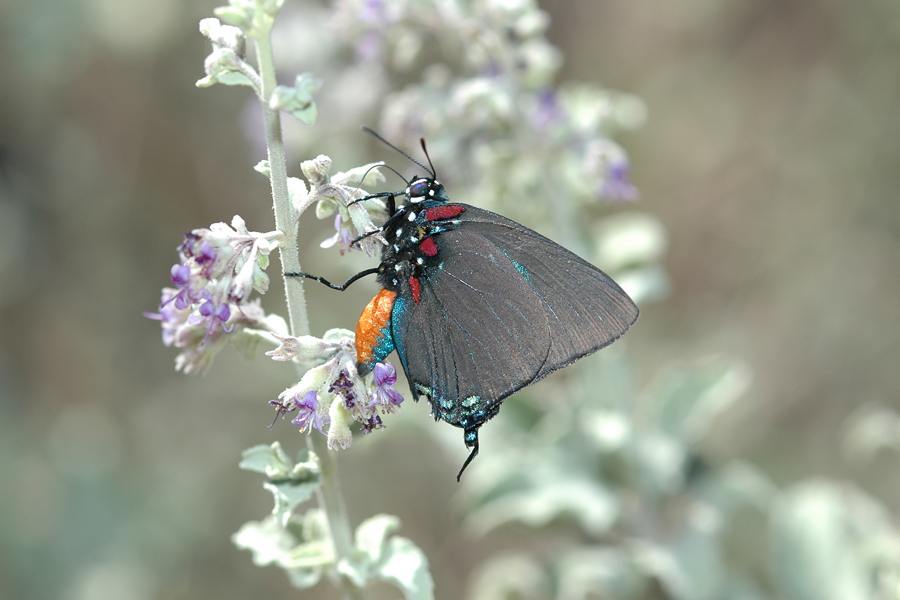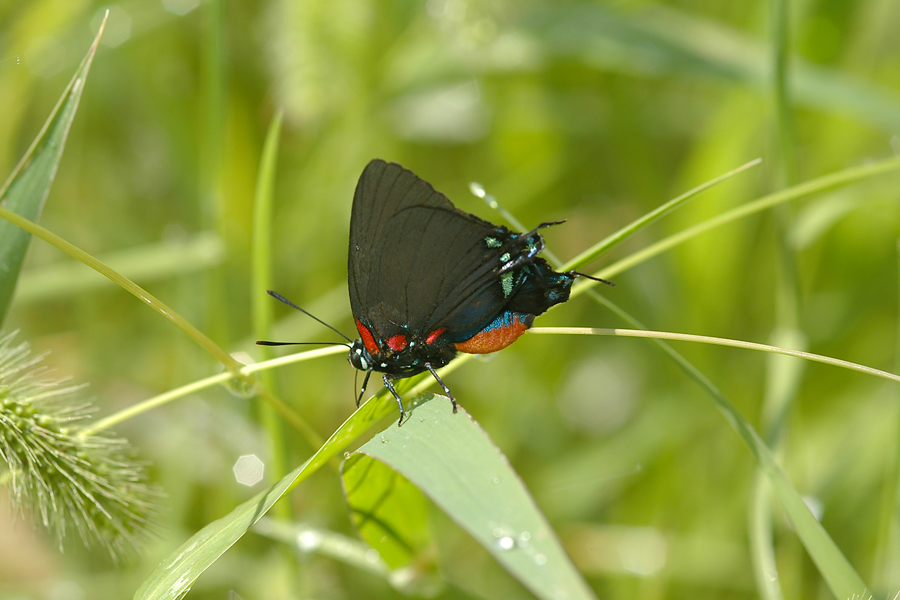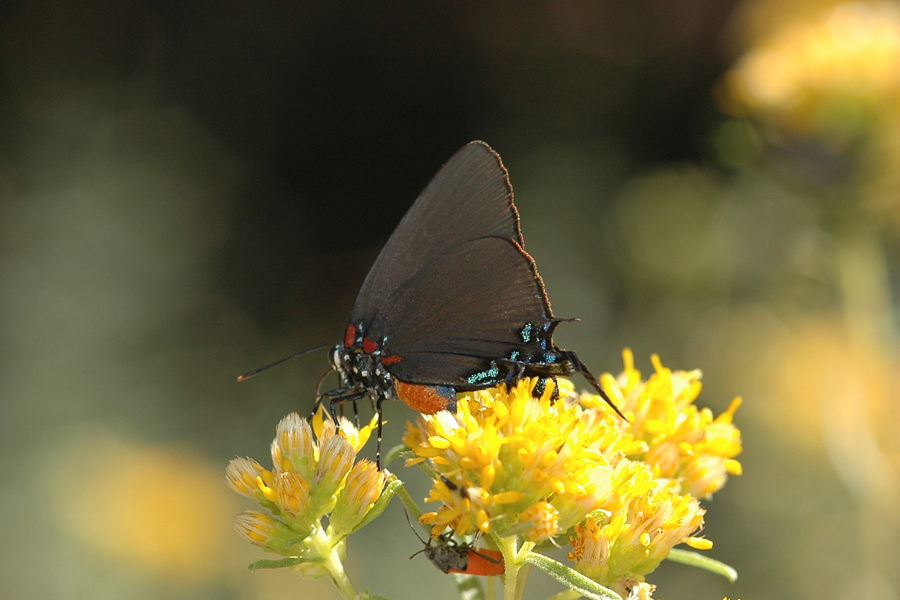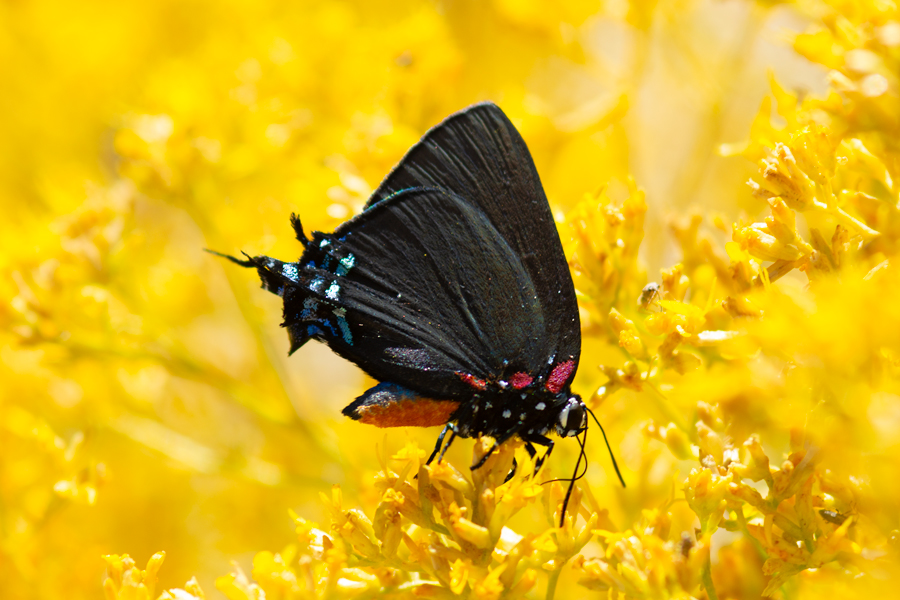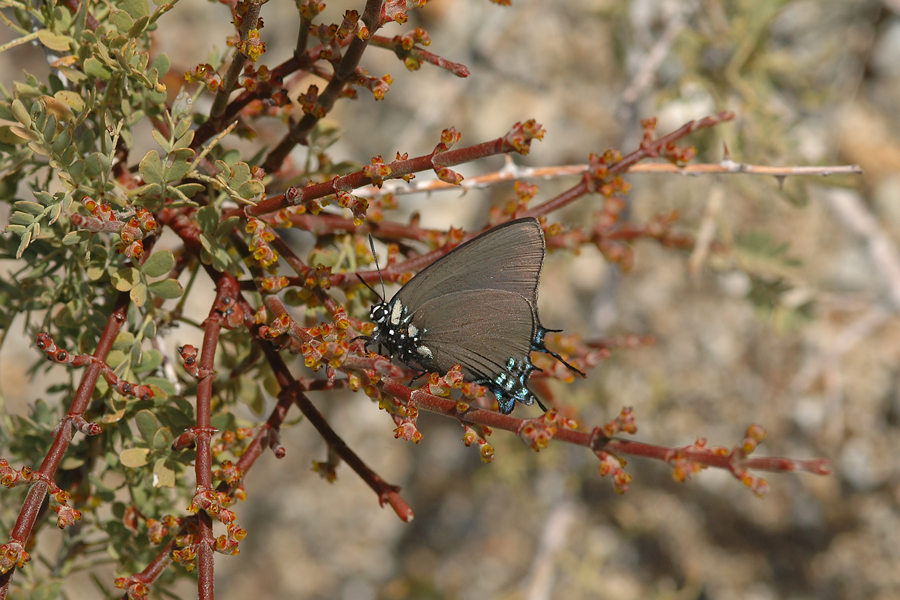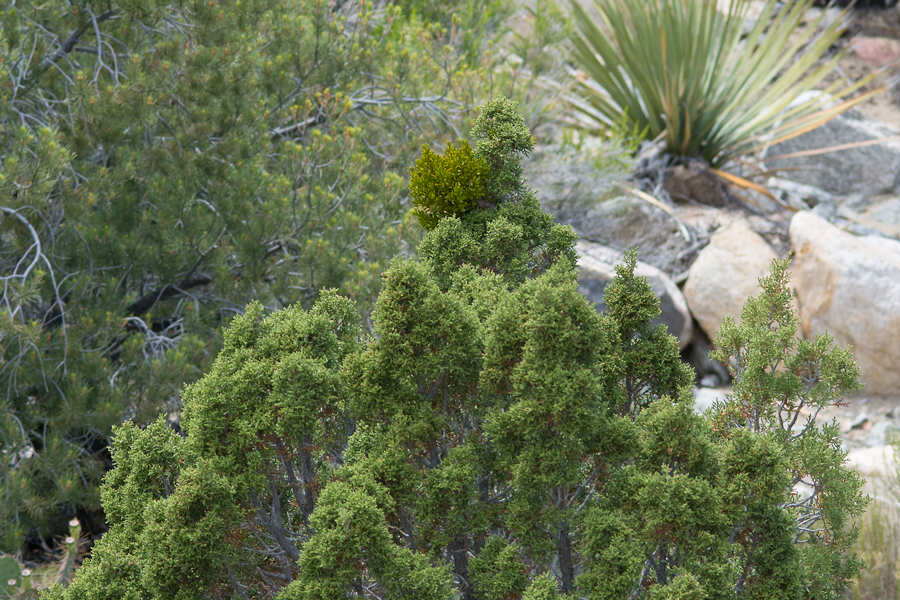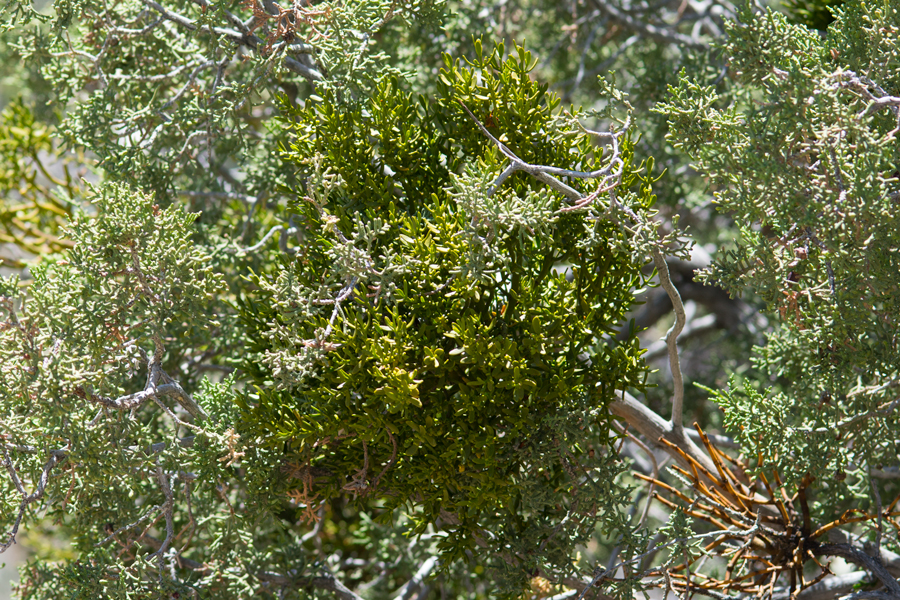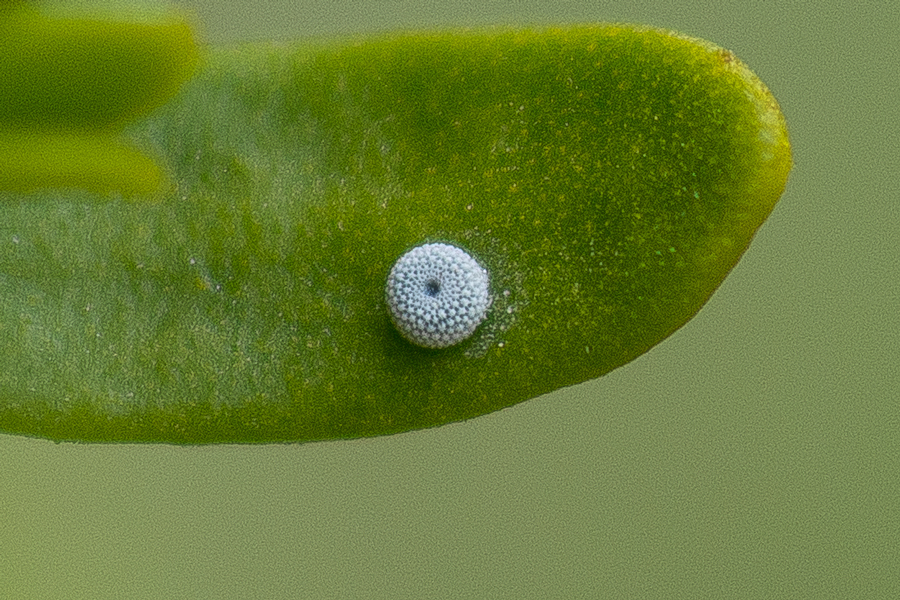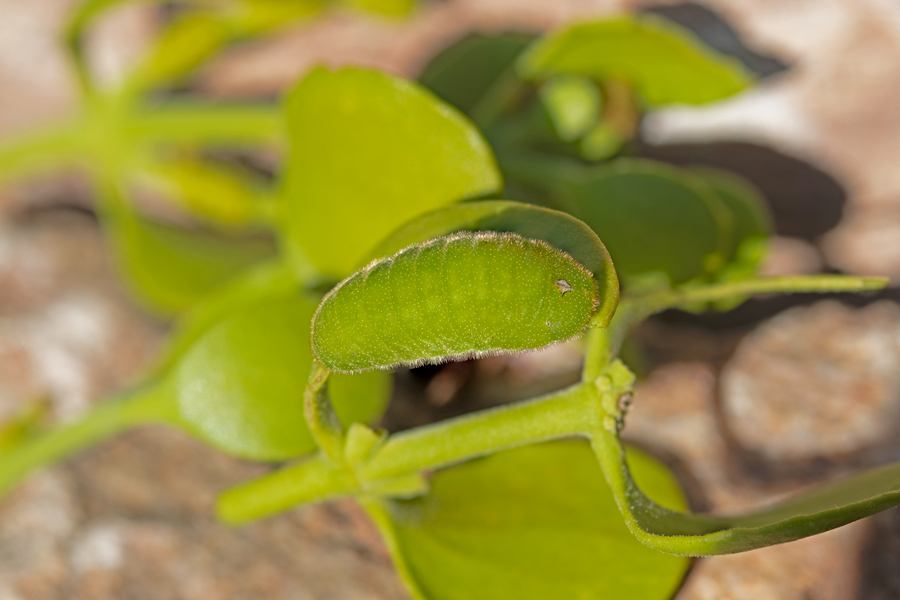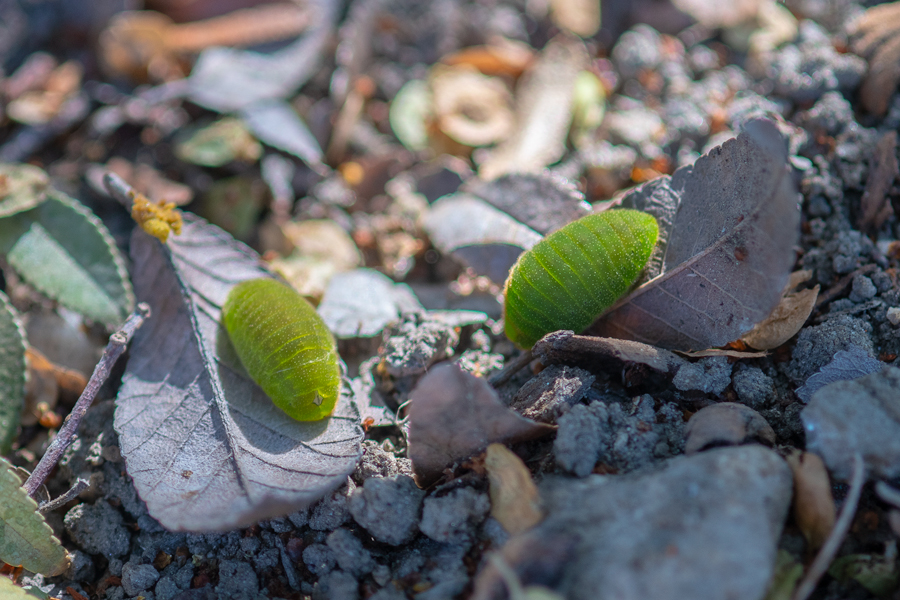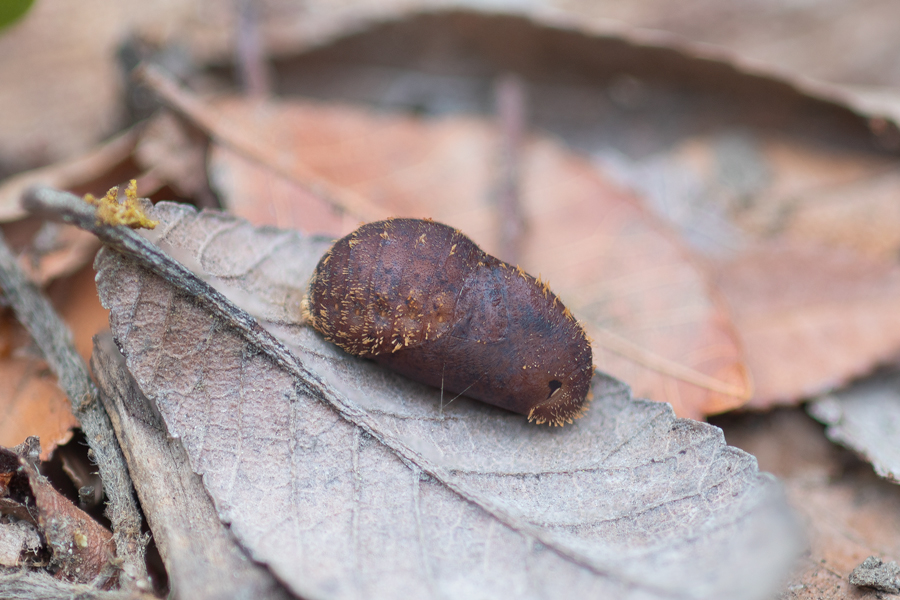Atlides halesus corcorani
Great Purple Hairstreak
Large - for a hairstreak - and featuring brilliant metallic blue, light green, red and orange set against black. The white dots against the black of the head and thorax remind one of a monarch's body coloration. Atlides halesus corcorani is a spectacular member of a tropical group of butterflies that is like nothing else in southern California. Other members of the genus Atlides - there are about 17 - are more or less similar to halesus, but only the latter ranges north into the U.S. Not particularly rare, it uses many species of mistletoe and can be found in a variety of places, but it's always a head-turner when spotted. I've seen it sporadically in places such as Big Rock Creek in the San Gabriels in the fall; along Cactus Spring Trail (not reliably) in spring; and Anza-Borrego (Plum Canyon, also spring); and in the Mojave National Preserve in the autumn.
In the deserts around junipers, look for Phoradendron bolleanum and the butterfly may be in the area, perhaps on flowers taking nectar. Where mesquite, catclaw, etc. grow, the mistletoe will probably be Phoradendron californicum. Another is Phoradendron macrophyllum, on cottonwood, willow and sycamore trees. It flies much of the year.
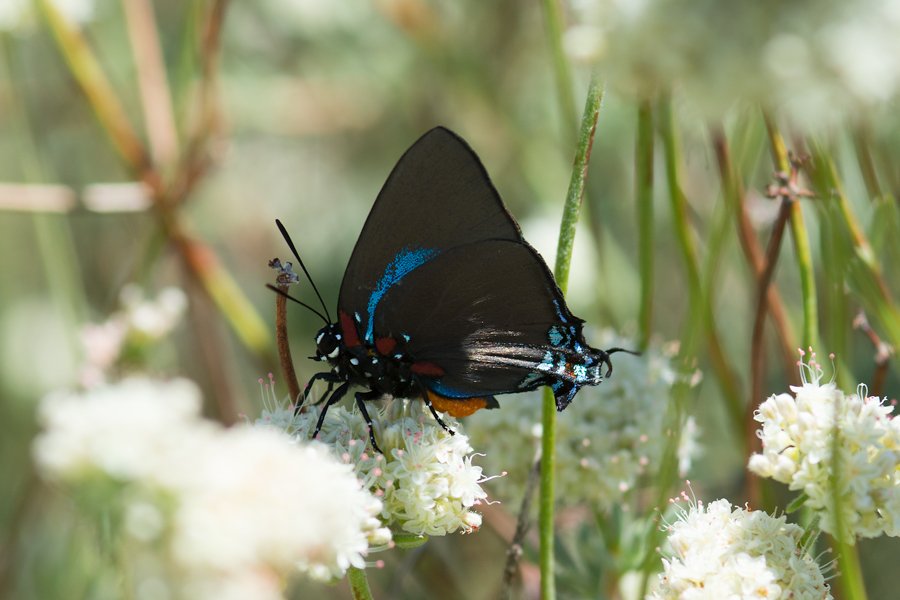
This male Atlides halesus corcorani was taking nectar on California buckwheat on June 3, 2017 at Cactus Spring Trail.
Male great purple hairstreak, Atlides halesus corcorani, surely one our most exotic-looking butterflies in California. This one was taking nectar on desert lavendar in Plum Canyon, Anza-Borrego Desert State Park. October 3, 2005. Males have blue scaling on the ventral forewing, barely visible here, that females lack.
I found this one roadside in the Valyermo area, where the desert meets the San Gabriel Mountains. September 11, 2008. The roadsides there are good places to look for this species.
Female great purple hairstreak from Arizona - Boyce Thompson Arboretum, September 25, 2007. Note the lack of blue scales on the forewing.
Another female. This time, I was on Kelbaker Road in the Mojave National Reserve near Granite Pass. October 7, 2019.
The hostplants for Atlides halesus corcorani are species of mistletoe. This is Phoradendron californicum on mesquite in Anza-Borrego Desert State Park. March 1, 2009.
Here's a look at another host plant for this hairstreak: Phoradendron bolleanum, which parasitizes junipers and cypresses (California juniper in this instance).
I spotted this little Phoradendron bolleanum near the top of this juniper along Cactus Spring Trail, and checked it for eggs of Atlides halesus corcorani - see below.
And here is an egg of Atlides halesus corcorani on a leaf of that Phoradendron bolleanum above. May 27, 2016.
The larvae have an interesting mark called a shield. Thanks to Gordon Pratt for this and those below. September 24, 2022.
Two larvae that were done feeding have moved to leaf litter to pupate.
And a day or two later, a chrysalis. September 29, 2022.
©Dennis Walker

